Leland Stanford Mansion State Historic Park
Introduction
Text-to-speech Audio
This site showcases the 19th-century residence of Leland Stanford Sr., who served as the Governor of California (1861-1863) and as a U.S. Senator (1885-1893), in addition to his position as the president of the Central Pacific Railroad Company (1861-1890) and Southern Pacific Railroad (1885-1890). Along with his wife, Jane, he also founded Stanford University, established by the couple as a philanthropic memorial to their late son, Leland Stanford Jr. The Stanford Mansion was originally a smaller, two-story home built in 1856 by Shelton Fogus, a Gold Rush-era merchant. After the Stanfords acquired the property, they expanded it considerably, with furnishings and decor that reflected Victorian elegance. It served as the Governor's Mansion during Stanford's tenure and also during the terms of California's next two governors. The home was later converted into an orphanage, a school for young women, and most recently, a museum and state historic park. The property was designated as a California State Landmark in 1957 and was listed as a National Historic Landmark in 1971.
Images
The Leland Stanford Mansion State Historic Park, after a $22 million restoration and renovation that took 14 years to complete.
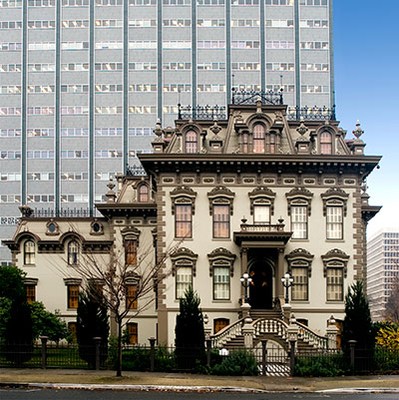
Historical Marker at the Leland Stanford Mansion State Historic Park
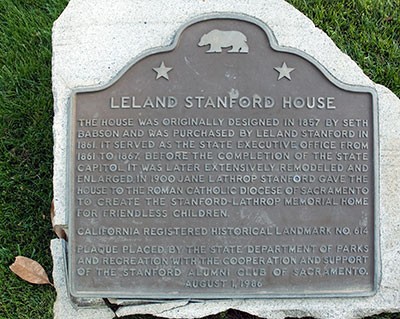
A family portrait before Leland Stanford Jr.'s death in 1884. In addition to his tenure as Governor of California, Leland Stanford Sr. was one of "The Big Four," who were instrumental in completing the Transcontinental Railroad to California.
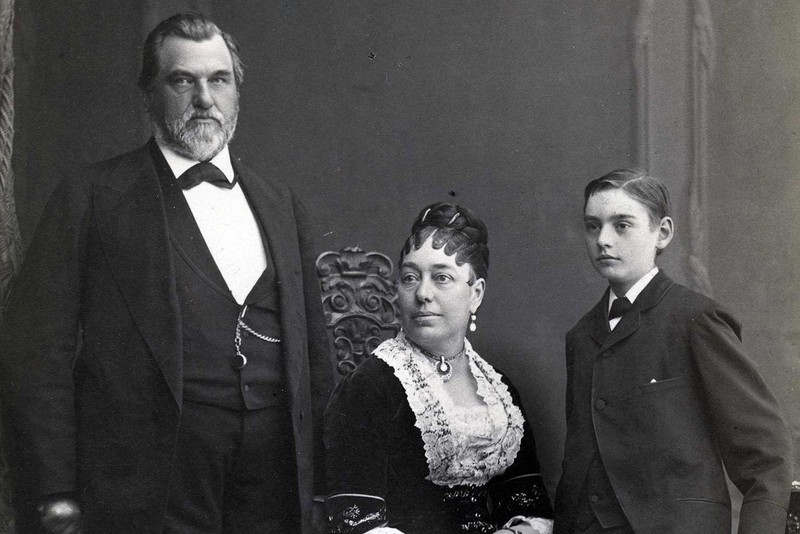
The Stanford Mansion library in its current incarnation. Many of the furnishings belonged to the Stanfords.
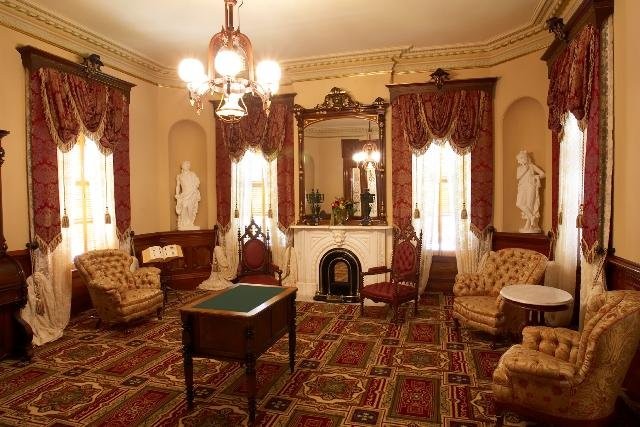
The Main Parlor. Originally built in 1856 by a Gold Rush merchant, it was remodeled twice under the Stanfords' decades of ownership.
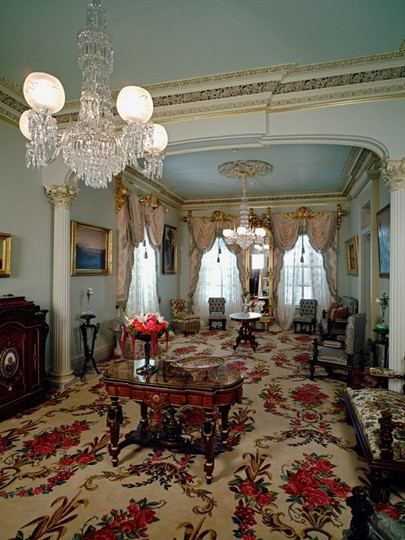
The Stanford-Lathrop Mansion was added to the National Register of Historic Places in 1971.
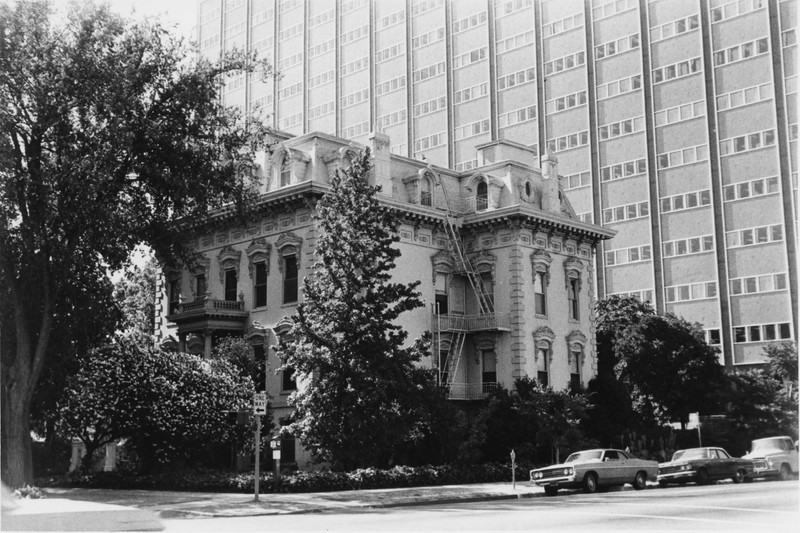
Backstory and Context
Text-to-speech Audio
Built in 1856 by a Gold Rush merchant, Sheldon Fogus, this stately home was later acquired by Leland Stanford, who became the Governor of California while in residence here. Stanford was born in 1824 in Albany, New York. After attending law school, he apprenticed for an Albany law firm and met Jane Elizabeth Lathrop, who became his wife. Upon relocating to Sacramento, California, Stanford joined his brothers, who were successful merchants, and became the owner of the Stanford Brothers Store. In Sacramento, Stanford also formed business relationships with several other entrepreneurs with whom he collaborated to form California's Republican Party. Stanford campaigned on behalf of political candidates such as President Abraham Lincoln.
As Stanford grew increasingly invested in state and national politics, he decided to run for office himself, becoming the Republican Party's gubernatorial nominee in 1861. Upon winning the election, Stanford was sworn in as Governor of California for a two-year term, and he later served as a U.S. Senator from 1885 to 1893. Prior to his tenure as Governor of California, Stanford served as the president of the Central Pacific Railroad Company, where he had an integral role in the establishment of the transcontinental railroad. He returned to the company when he was not otherwise involved in his political career.
The Stanfords used their growing wealth to expand their two-story, 4,000-square-foot home to a total of 19,000-square-feet, adding a story above and below the house. Following the death of their only son, Leland Stanford Jr., the couple also became involved in philanthropic causes. They founded Stanford University and remained patrons of the institution until their deaths. When Leland Stanford Sr. died in June 1893, he left his estate to Jane. After her death in 1900, the Stanford residence was given to the Catholic Bishop of Sacramento, where it was converted into an orphanage managed by the Sisters of Mercy, a settlement house run by the Sisters of Social Services, and later, a high school for girls. In 1957, the property was designated as a California State Historic Landmark.
In 1971, the property was designated as a National Historic Landmark with a listing on the National Register of Historic Places. It was subsequently purchased by the State of California in 1987 to create a State Historic Park, while the Leland Stanford Mansion Foundation was established to help restore the property and reopen it as a public museum. More recently, the Stanford Mansion underwent a 14-year, $22 million restoration and renovation to preserve the historic property for the future. The Leland Stanford State Historic Park, as it is currently known, reopened to the public with daily tours. Featuring many original furnishings and Victorian-era décor, the site once again resembles the home’s original 19th-century appearance.
Sources
"Leland Stanford Mansion State Historic Park", California State Parks. Accessed September 2nd, 2023. https://www.parks.ca.gov/?page_id=489.
"California Historical Landmark 614: Leland Stanford House", Noe Hill. Accessed September 2nd, 2023. https://noehill.com/sacramento/cal0614.asp.
"California SP Stanford-Lathrop House: Nomination Form, National Register of Historic Places", National Archives. December 9th, 1971. Accessed September 2nd, 2023. https://catalog.archives.gov/id/123860674.
"History", Stanford University. Accessed September 2nd, 2023. https://www.stanford.edu/about/history/.
"National Register #71000178: Leland Stanford House", Noe Hill. Accessed September 2nd, 2023. https://noehill.com/sacramento/nat1971000178.asp.
Noe Hill
Noe Hill
Leland Stanford Mansion State Historic Park / UC Berkeley, Bancroft Library
Leland Stanford Mansion State Historic Park / CA State Parks
Leland Stanford Mansion State Historic Park / CA State Parks
Nomination Form, National Register of Historic Places
